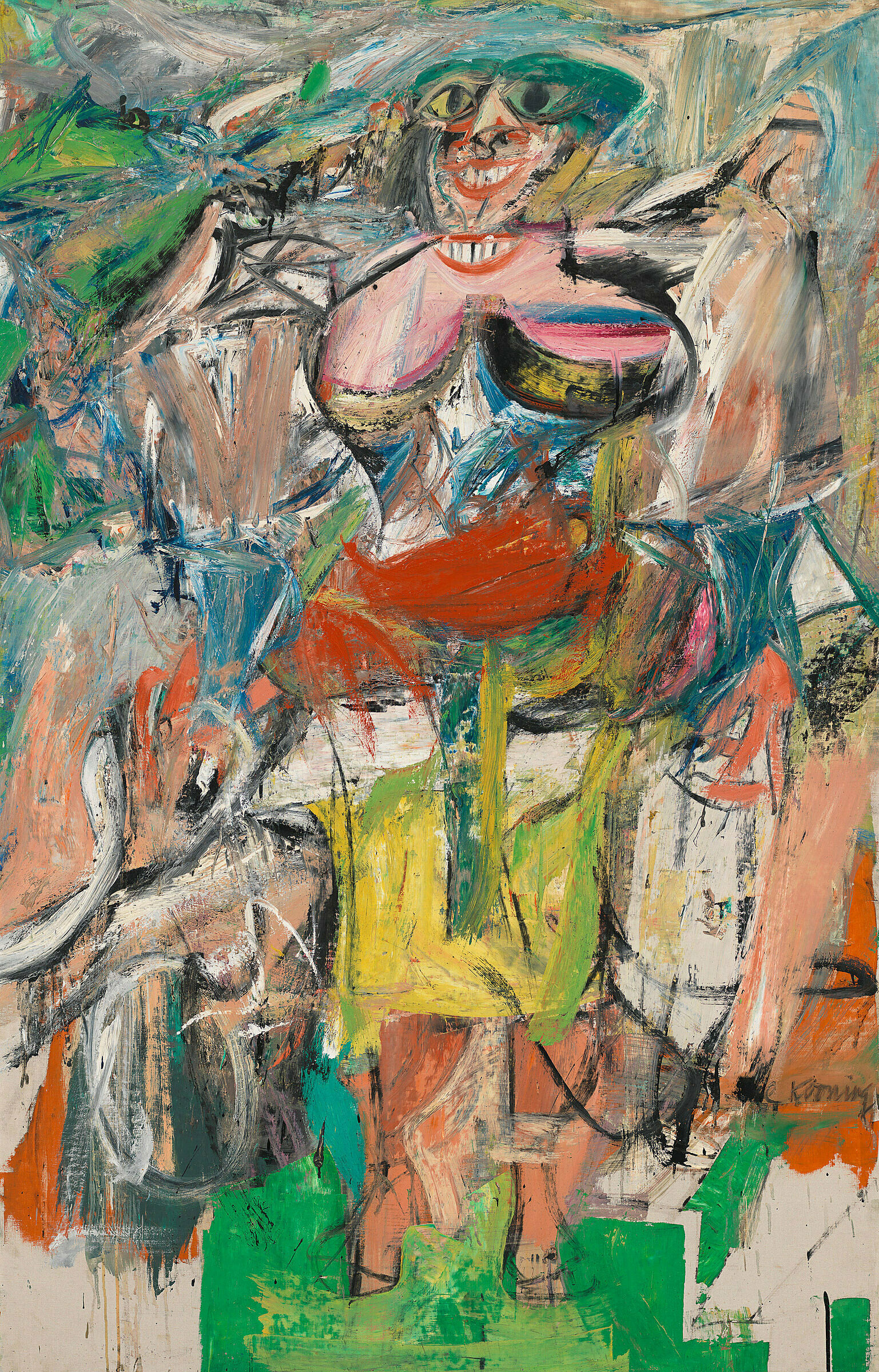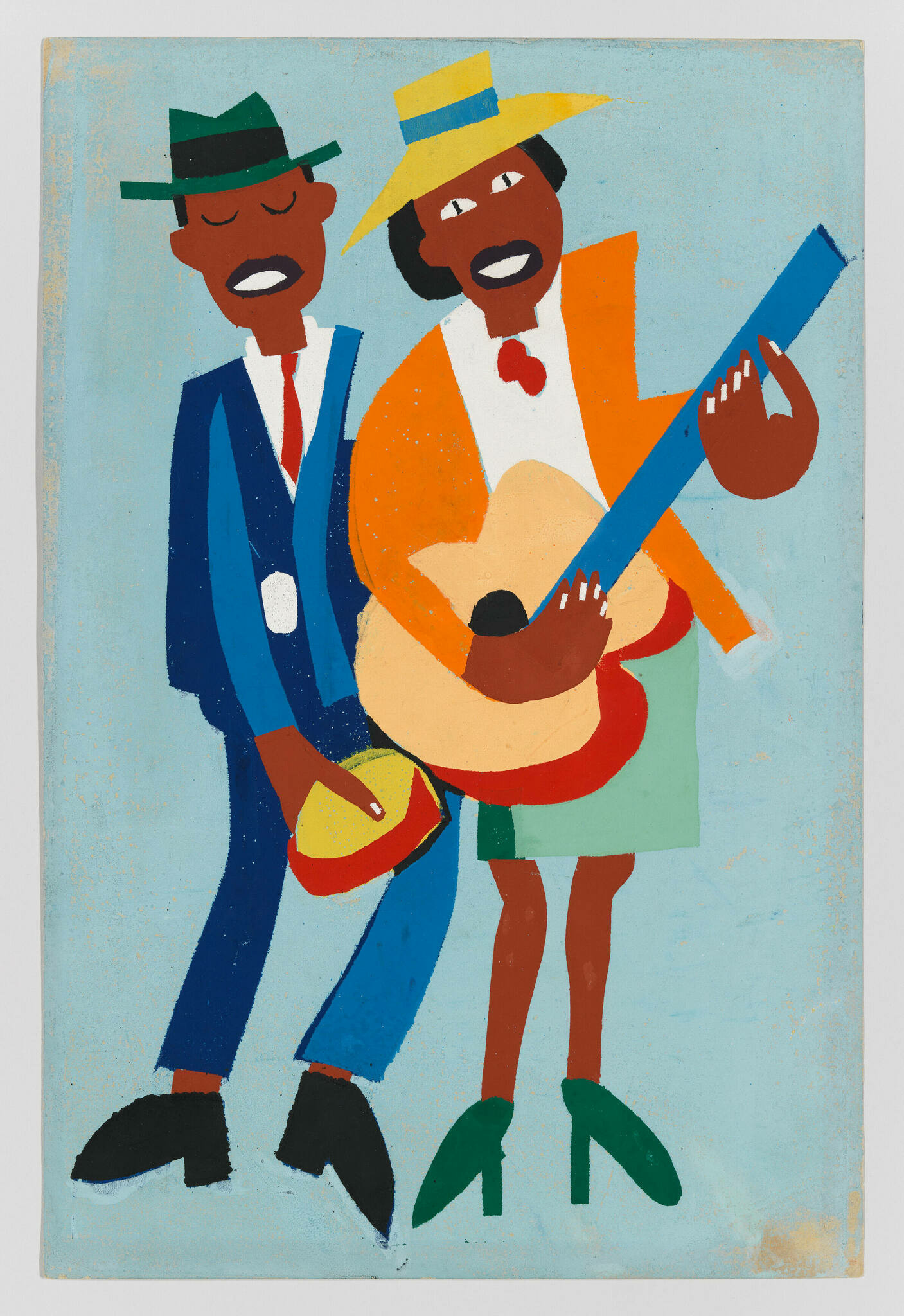William H. Johnson
1901–1970
William H. Johnson used the language of modernist abstraction to create images of African American life in the 1930s and 1940s. Moving from his native South Carolina to New York in 1918, at the age of seventeen, Johnson settled in the city’s flourishing Harlem neighborhood. After studying at the National Academy of Design from 1921 to 1926, Johnson spent more than a decade living in Europe— first in France, followed by Denmark and Norway—where he felt he could achieve greater success as an African American artist. During these years, he assimilated the lessons of avant-garde European modernism and began working in a bold expressionist style. Johnson returned to New York in 1938 and began teaching at the Harlem Community Art Center, which was a focal point for the burgeoning art scene in Harlem during the 1930s. In the Center’s print studio, Johnson learned how to make screenprints, a medium that encouraged him to move away from his expressionist style toward a pared-down, planar language rooted in folk traditions.
An example of this new approach, Blind Singer utilizes flattened planes of vibrant, unmodulated color to capture the rhythms of daily life in Harlem. Here, Johnson portrays one of his favored subjects of this period: the lively musicians and dancers he encountered on the city streets. Such subjects also reflect Johnson’s interest in the writings of his friend Alain Locke, the philosophical leader of the Harlem Renaissance, who exhorted African American artists to find inspiration in the life and culture of their own people.
Introduction
William Henry Johnson (March 18, 1901 – April 13, 1970) was an American painter. Born in Florence, South Carolina, he became a student at the National Academy of Design in New York City, working with Charles Webster Hawthorne. He later lived and worked in France, where he was exposed to modernism. After Johnson married Danish textile artist Holcha Krake, the couple lived for some time in Scandinavia. There he was influenced by the strong folk art tradition. The couple moved to the United States in 1938. Johnson eventually found work as a teacher at the Harlem Community Art Center, through the Federal Art Project.
Johnson's style evolved from realism to expressionism to a powerful folk style, for which he is best known. A substantial collection of his paintings, watercolors, and prints is held by the Smithsonian American Art Museum, which has organized and circulated major exhibitions of his works.
Wikidata identifier
Q1883000
Information from Wikipedia, made available under the Creative Commons Attribution-ShareAlike License . Accessed November 24, 2025.
Introduction
Originally from Florence, South Carolina, Johnson spent much of his adult life traveling, and completed hundreds of oils, watercolors, gouaches, pen-and-ink sketches, block prints, silk screens, and ceramics during his career, which spanned a gamut of styles from the academic, through Impressionism, Cubism, Fauvism, and German Expressionism. Johnson left Florence around 1918 and moved to New York where he enrolled in the National Academy of Design and worked with the painter Charles Hawthorne. In 1926 Hawthorne raised funds to send Johnson abroad to study. He traveled in Europe beginning in 1926 and returned to New York in 1929. He returned to Europe and married Holcha Krake, a Danish textile artist, and settled in Denmark. They returned to the US in 1938, where he adopted a self-consciously vernacular style marked by vivid colors and flat compositions, drawing from African sculpture and African-American models for inspiration. His new subject matter included Harlem life, the rural south, and religious scenes. He attacked racism, and depicted African-American heroes and historical figures. After the death of his wife in 1944, he began a decline into mental illness and eventually ceased to produce art.
Country of birth
United States
Roles
Artist, painter
ULAN identifier
500027150
Names
William H. Johnson, William Henry Johnson, William Howard Johnson
Information from the Getty Research Institute's Union List of Artist Names ® (ULAN), made available under the ODC Attribution License. Accessed November 24, 2025.



